Discovering the Unique Sounds of Japan: From Tranquil to Festive
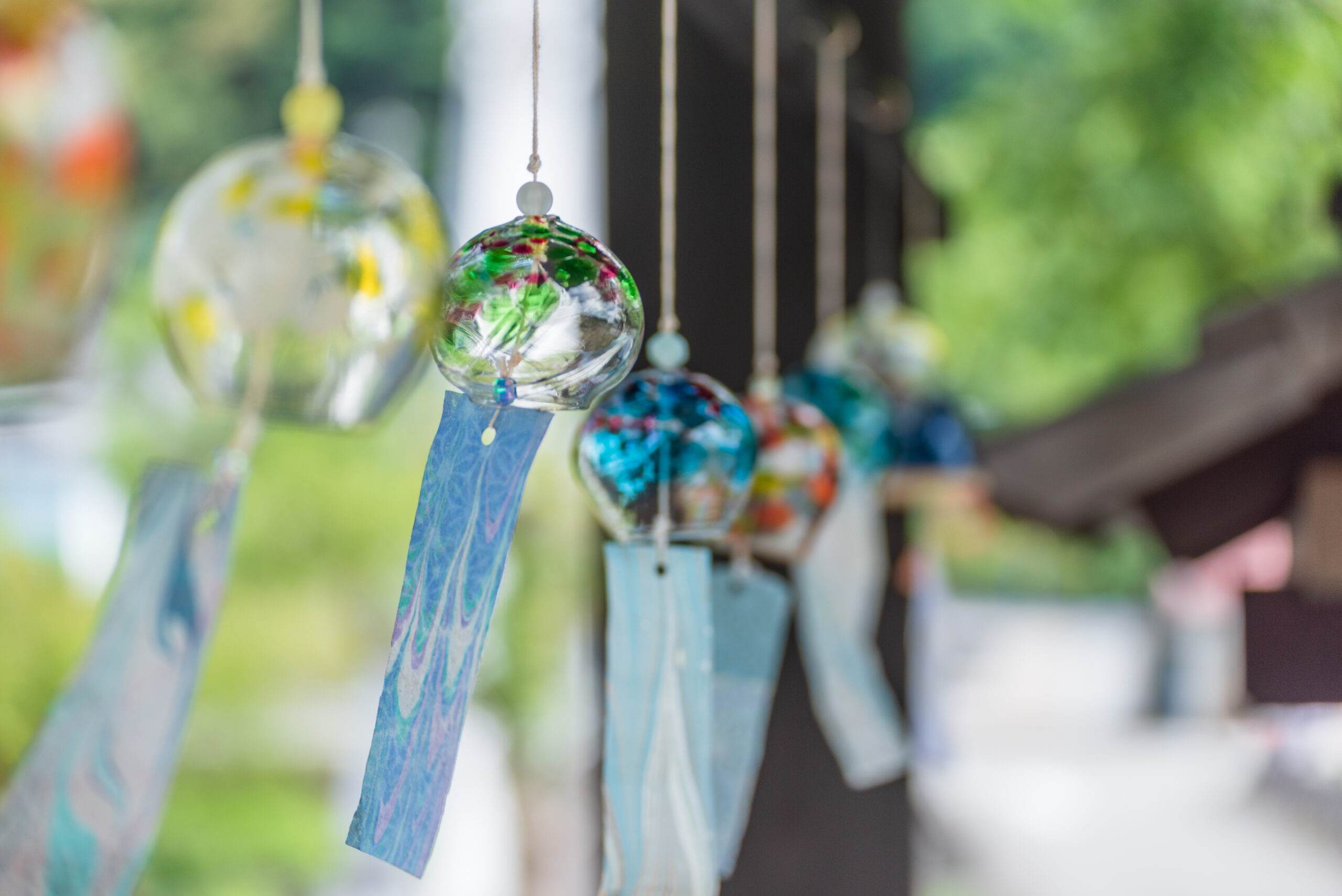
Have you ever stopped to think about the truly unique sounds that define Japanese culture? Beyond the bustling cities, Japan boasts a rich and nuanced auditory landscape that many might not be familiar with. You might be wondering, “What kind of unique sounds can I expect to hear? Are there really sounds beyond the usual city noise, and do they tell a story about Japanese culture? I’m interested in both the peaceful, calming sounds and the more energetic, celebratory ones.”
In this article, we’ll take you on an auditory journey through Japan, exploring the wide range of its sound culture, from the serene melodies of nature and traditional instruments to the vibrant energy of festivals. We will delve into specific examples of these unique sounds, uncovering their cultural significance and offering you a deeper appreciation for the diverse world of sound in Japan.
Introduction to Japanese Sound Culture
What is Japanese Sound Culture?
Japanese sound culture refers to the wide range of sounds that are deeply intertwined with the daily life, historical traditions, and aesthetic values of Japan. It encompasses not only music but also the subtle sounds of nature, the intentional sounds used in rituals and ceremonies, and the unique sonic expressions found in various art forms and everyday activities. Exploring Japanese sound culture offers a valuable lens through which to understand the nuances of Japanese society and its people.
The Importance of Sound in Japanese Traditions
Sound has held significant importance in Japanese traditions for many centuries. From the profound resonance of temple bells (鐘, kane) signaling time and religious observances to the intricate and delicate melodies played on traditional instruments during festivals and ceremonies, sound is an integral part of cultural practices. The conscious manipulation of sound, alongside a deep appreciation for silence (間, ma), showcases a distinct aesthetic sensibility within Japanese culture.
Unique Characteristics of Japanese Sounds
One of the defining characteristics of Japanese sound culture is the high regard for natural sounds. The gentle whisper of wind through bamboo, the soothing murmur of flowing water, and the delicate calls of birds are often cherished and integrated into artistic and spiritual expressions. Furthermore, the concept of ma (間), or the intentional use of silence, is considered a crucial element of the overall auditory experience, emphasizing the significance of both sound and its absence. The often subtle and carefully considered nature of many Japanese sounds distinguishes it from more overtly expressive sound cultures around the world.
Tranquil Sounds of Japan
Nature’s Serenity: Japanese Nature Sounds
Japan’s diverse geography and deep respect for nature mean that natural sounds hold a special place in its sound culture. These sounds often evoke a profound sense of peace and tranquility and are deeply appreciated for their subtle beauty.
The Sound of Bamboo Forests
The gentle rustling and swaying of bamboo (竹, take) in the wind create a distinctive and calming sound. Bamboo forests are a common feature of the Japanese landscape and are frequently associated with serenity and natural elegance. The sound of bamboo is often incorporated into traditional Japanese music and serves as a recurring motif in literature and art, symbolizing resilience and tranquility.
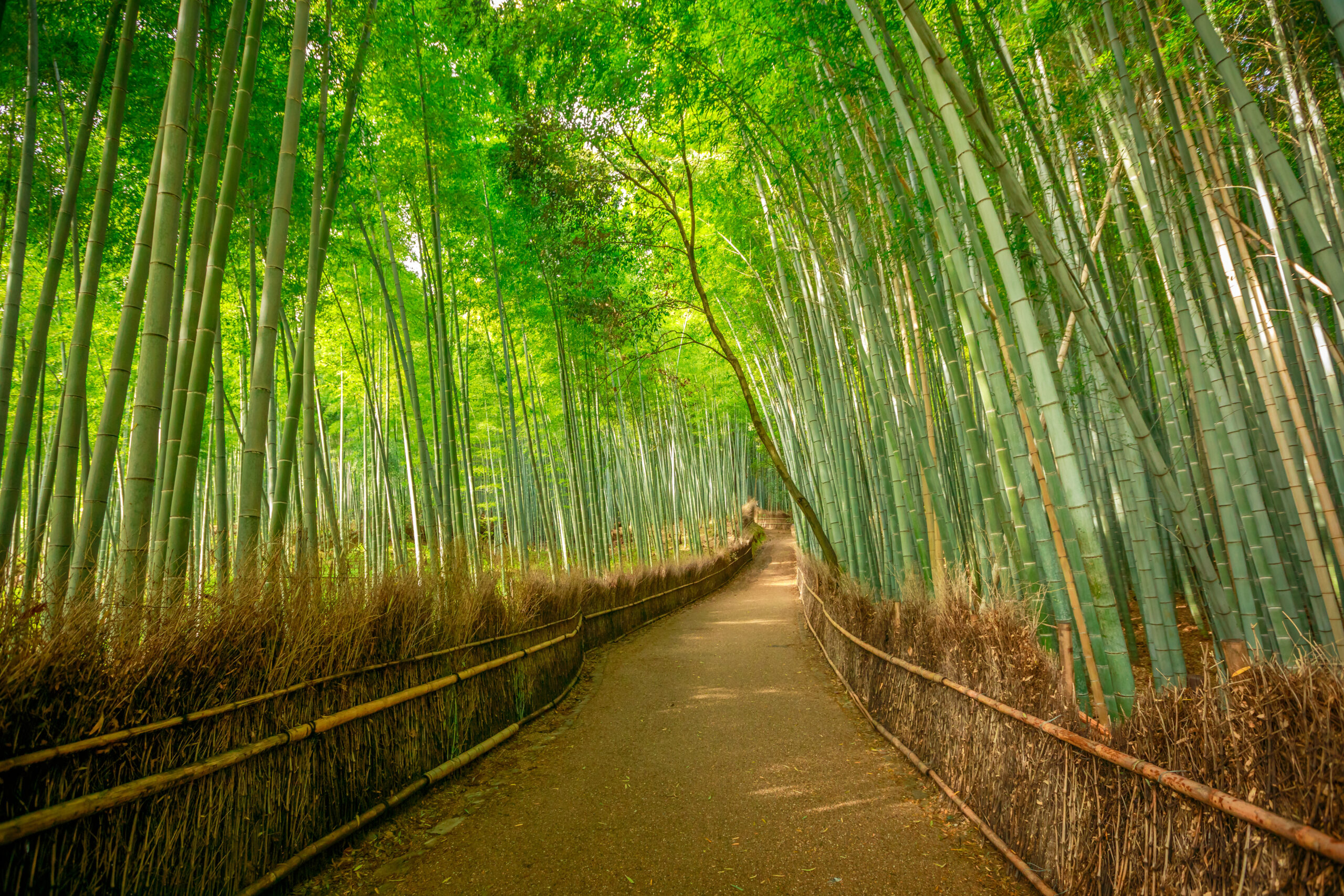
Gentle Streams and Waterfalls
The sound of flowing water, whether it’s the soft murmur of a stream (小川, ogawa) meandering through the landscape or the powerful yet calming cascade of a waterfall (滝, taki), is highly valued in Japan for its soothing and purifying qualities. The sounds of water are often deliberately integrated into the design of Japanese gardens (日本庭園, nihon teien) and are frequently used in meditation and relaxation practices to promote inner peace.
The Singing of Birds
The melodious singing of birds (鳥のさえずり, tori no saezuri) is another cherished aspect of Japan’s tranquil soundscape. Different species of birdsong are associated with different seasons, evoking a sense of natural harmony and the passage of time. These natural melodies are often celebrated in Japanese poetry and are considered an integral part of the peaceful ambiance of the countryside.
The Calming Resonance of Traditional Instruments
Certain traditional Japanese instruments are particularly known for their ability to produce calming and evocative sounds. These instruments are often featured in traditional music and ceremonies, contributing significantly to the creation of a peaceful and contemplative atmosphere.
The Delicate Sound of the Shakuhachi
The shakuhachi (尺八) is a Japanese bamboo flute renowned for its breathy and often melancholic tone. Historically associated with Zen Buddhism, its sound is deeply intertwined with meditation and spiritual practices. The unique timbre of the shakuhachi can evoke a profound sense of tranquility and introspection in listeners.
The Soothing Strum of the Koto
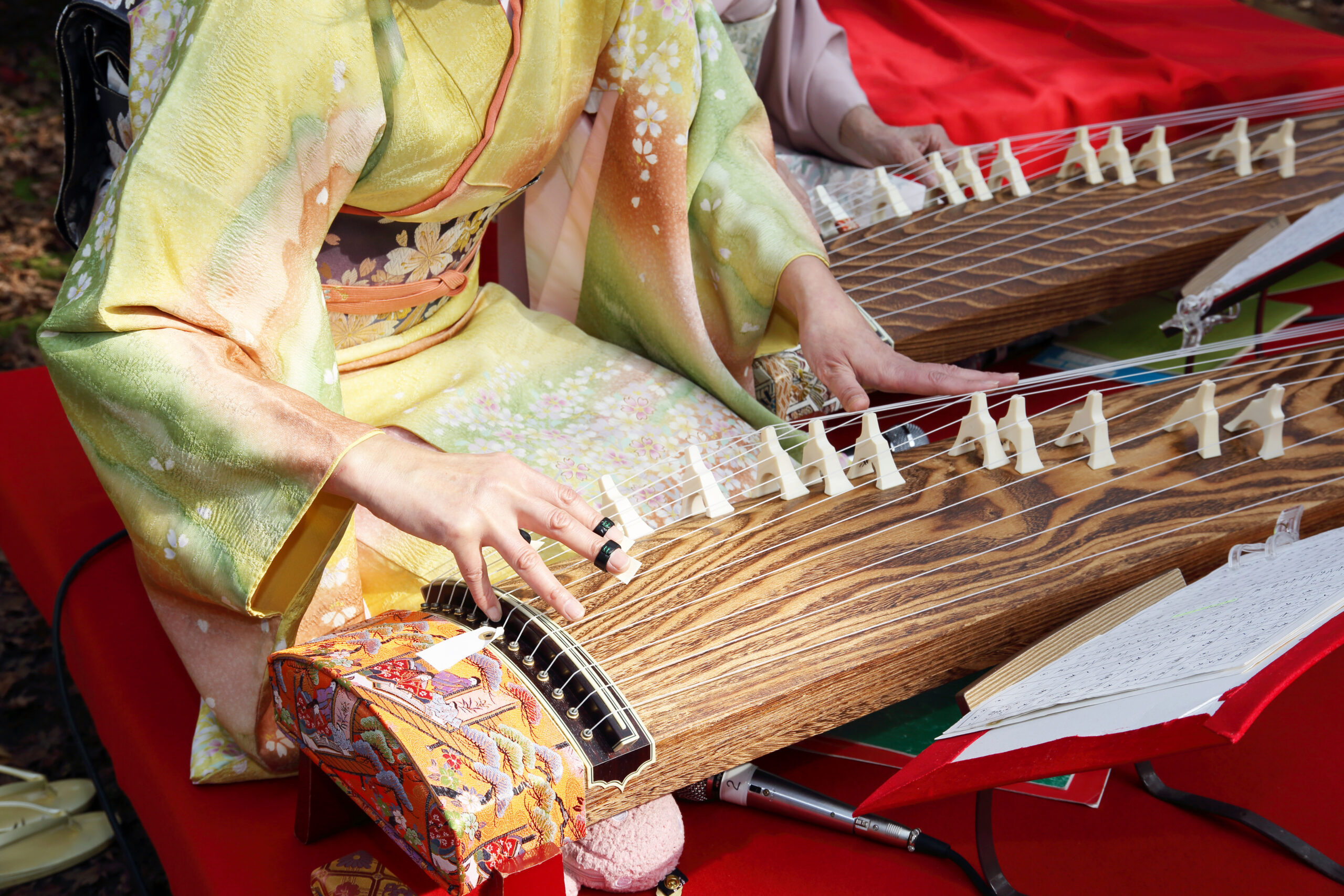
The koto (箏) is a Japanese zither-like instrument with thirteen strings, traditionally played with ivory picks. Its elegant and flowing melodies are often described as soothing, graceful, and ethereal. Koto music is frequently performed in traditional settings, such as tea ceremonies and formal gatherings, and its gentle sounds can evoke feelings of peace and serenity.
The Subtle Notes of the Shamisen
While the shamisen (三味線) is often associated with more lively and rhythmic music, particularly in genres like Kabuki and folk music, it also possesses the capacity to produce subtle and melancholic notes. In certain styles of traditional Japanese music, the delicate sounds of the shamisen can contribute to a tranquil and introspective atmosphere.
Ambient Sounds for Relaxation
Certain ambient sounds prevalent in Japan are particularly associated with relaxation and the creation of a calm and peaceful environment.
Japanese Rain Sounds
The sound of rain (雨音, amaoto) is widely considered relaxing in Japan. Different types of rainfall, from the soft patter of a gentle drizzle (小雨, kosame) to the steady and rhythmic sound of a downpour (大雨, ōame), each possess their own unique sonic qualities that many find deeply soothing and conducive to relaxation.
Zen Garden Sounds
Zen gardens are meticulously designed to promote meditation and inner tranquility. The subtle sounds within a Zen garden, such as the gentle rustling of leaves, the soft crunch of raked gravel, or the occasional drip of water from a bamboo water feature (水琴窟, suikinkutsu), all contribute to its profoundly peaceful atmosphere.
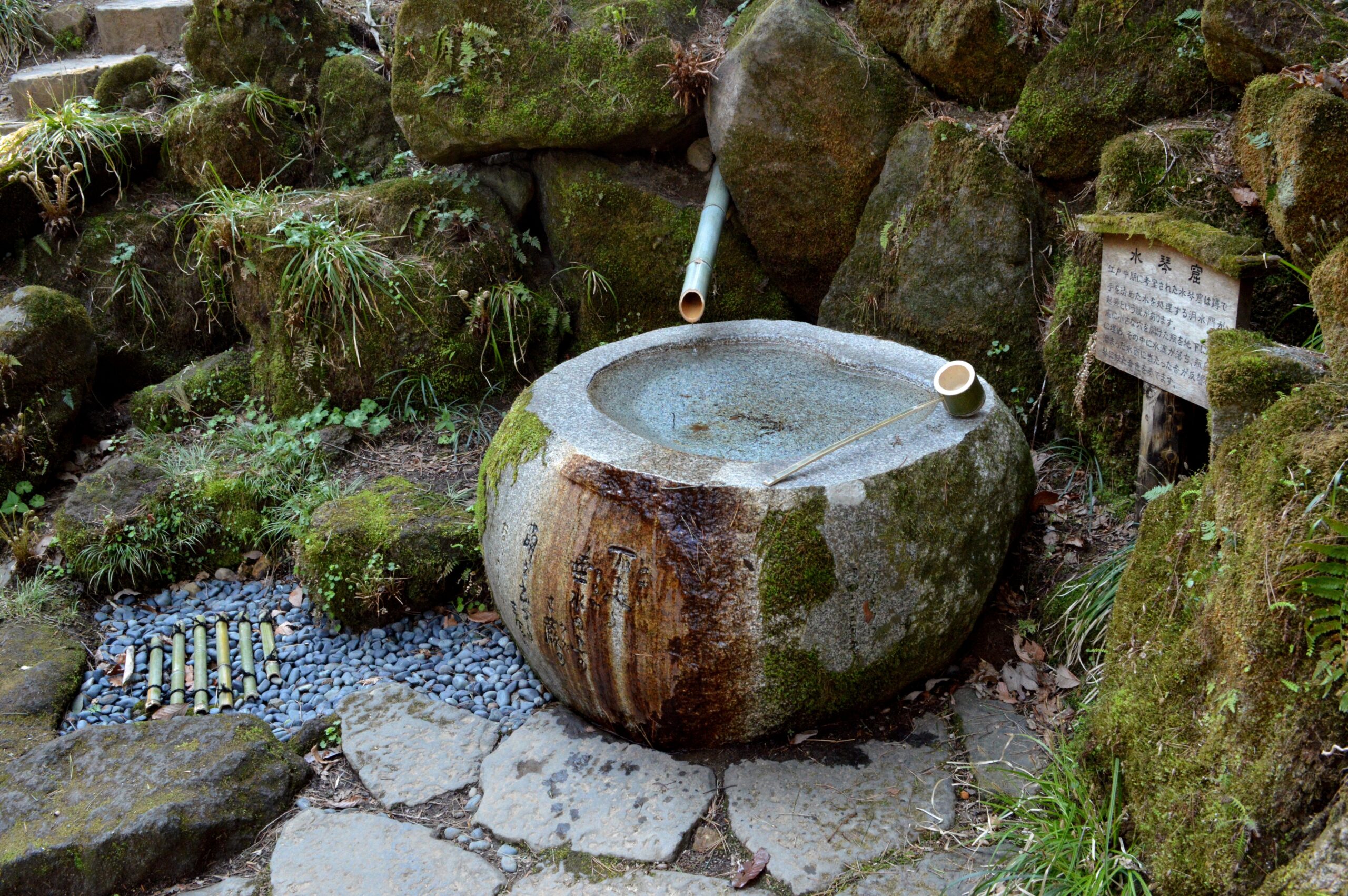
The Gentle Ringing of Wind Chimes
Wind chimes (風鈴, fūrin) are a popular summer feature in Japan. Traditionally made of glass or metal, their light and airy tinkling sounds are often associated with coolness, refreshment, and a gentle sense of calm as they sway in the breeze.
Festive Sounds of Japan
The Energy of Japanese Festival Music
Japanese festivals (祭り, matsuri) are vibrant and lively occasions, and music plays an indispensable role in creating their energetic and celebratory atmosphere. The sounds of festival music often reflect the unique spirit and excitement inherent in these cultural events.
Powerful Taiko Drumming
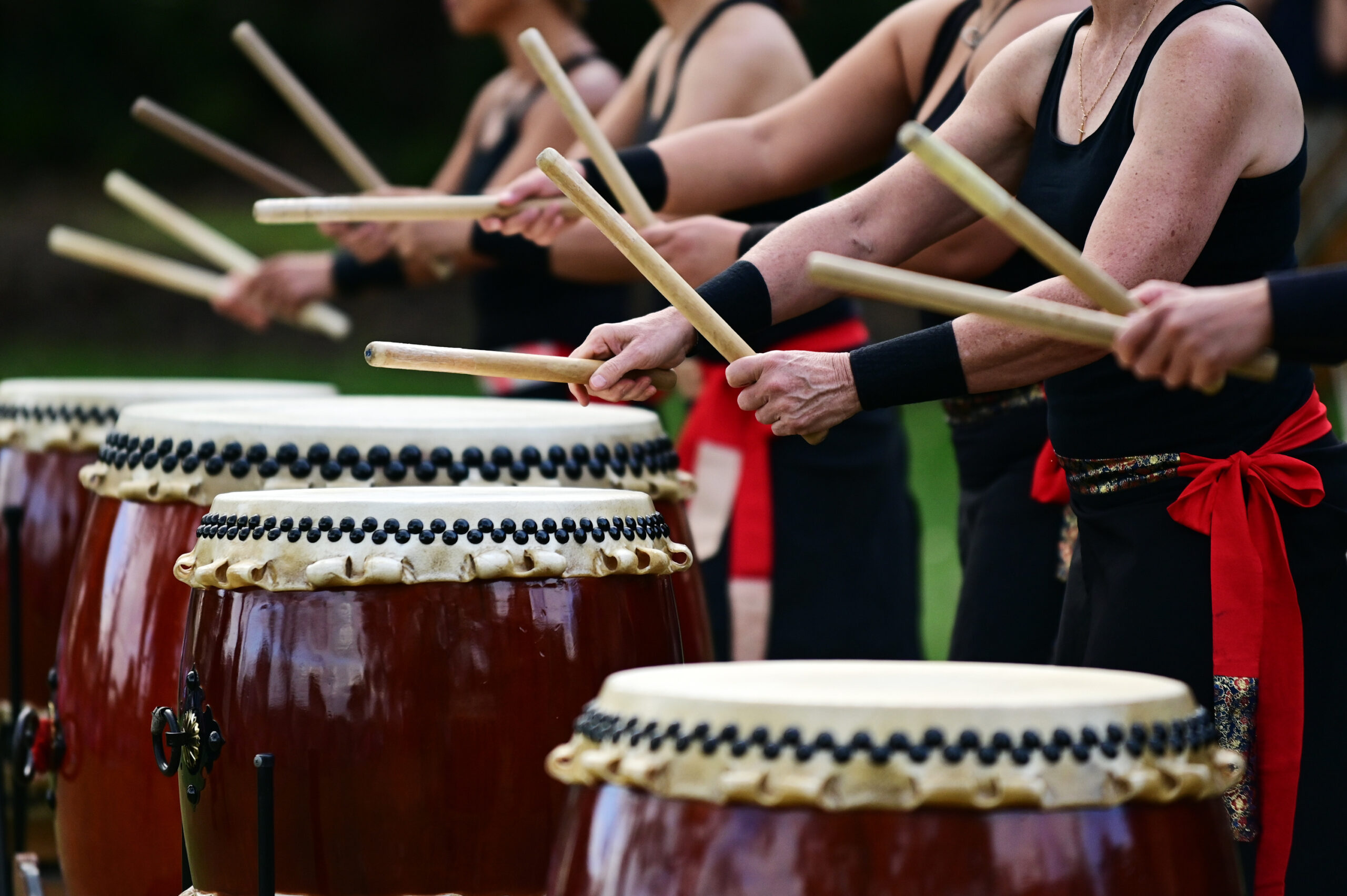
Perhaps one of the most iconic and recognizable sounds of Japanese festivals is the powerful taiko (太鼓) drumming. These large, barrel-shaped drums produce deep, resonant sounds that can be felt physically as much as they are heard. Taiko performances are frequently a central element of festival celebrations, with groups of drummers performing synchronized rhythms that create a thrilling and exhilarating experience for both the performers and the audience. The sheer volume and intensity of the taiko drums contribute significantly to the overall festive mood.
Lively Flutes and Other Instruments
In addition to the commanding presence of taiko drums, many other instruments contribute to the lively and often joyful sounds of Japanese festivals. Flutes (笛, fue), such as the high-pitched shinobue (篠笛) and the more melodic ryūteki (龍笛), often play bright and intricate melodic lines that weave through the percussive sounds. Other instruments like handbells (鈴, suzu), gongs (鉦, shō), and various types of percussion instruments add layers of texture and rhythm to the hustle and bustle of the festival, creating a rich and dynamic soundscape that is characteristic of these events.
The Sounds of the Crowd
The collective sounds of the crowd are also an essential and often overlooked component of the festive auditory experience. The excited cheering, joyful laughter, and the lively chatter of people enjoying the festivities all contribute to the overall sonic atmosphere of a Japanese festival. Traditional calls and chants (掛け声, kakegoe) are frequently heard from participants and spectators alike, adding a unique and culturally specific auditory character to these celebrations.
Sacred Sounds: Temple Bells
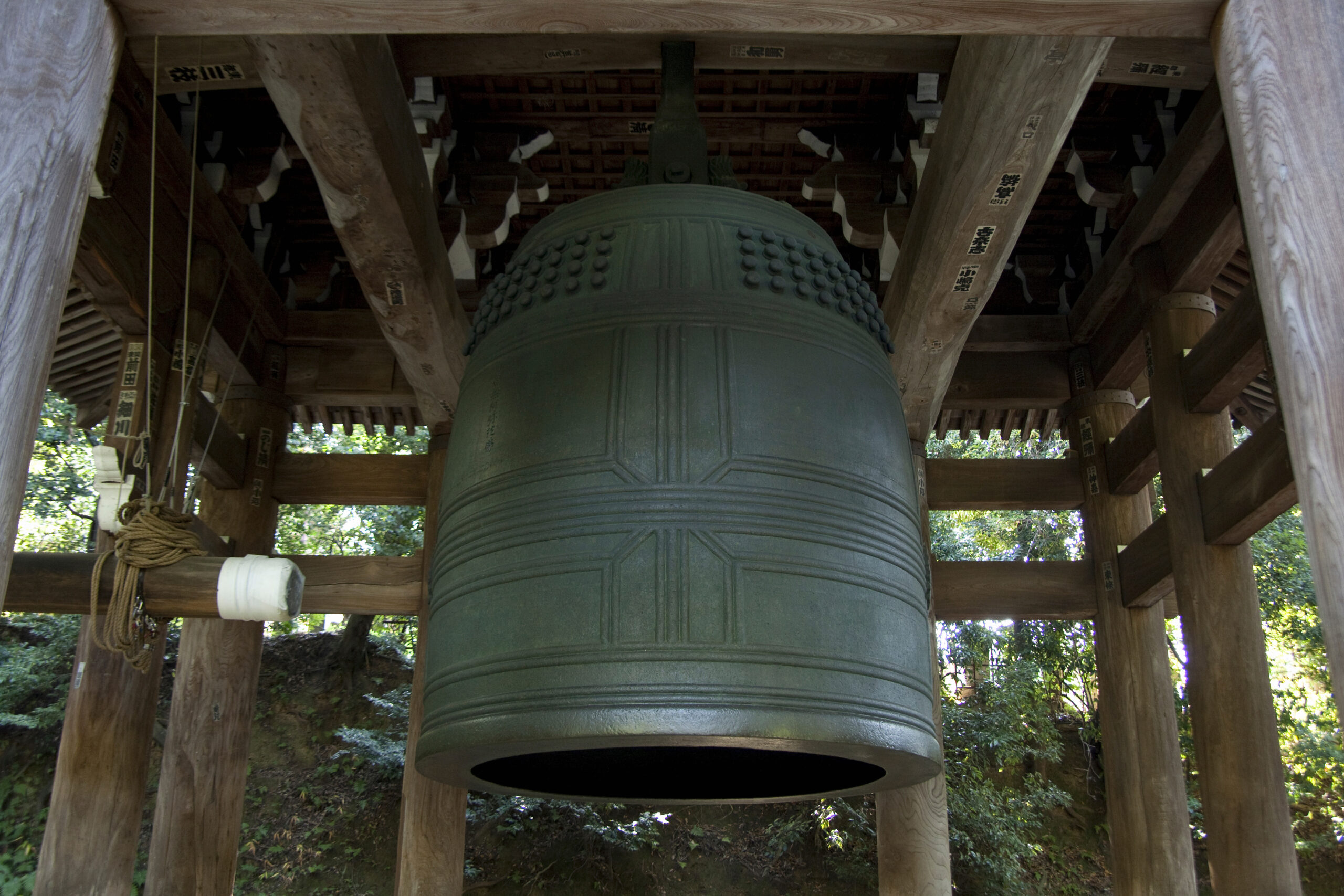
While temple bells (鐘, kane) are often associated with tranquility and the passage of time in a religious context, they also play a significant role in the soundscape of many Japanese festivals. Their resonant tones can mark important moments within the festival proceedings or add a sense of solemnity and tradition to the celebrations.
The Significance of Temple Bells in Buddhism
In Buddhism, the sound of temple bells is considered sacred and is utilized for various purposes, including signaling prayer times, marking the beginning and end of rituals, and believed to ward off negative influences. During festivals, the ringing of temple bells can signify the commencement or conclusion of specific ceremonies or processions, adding a spiritual dimension and a sense of historical continuity to the festive atmosphere.
Different Types of Temple Bells and Their Sounds
Japan is home to various types of temple bells, each possessing its own distinct size, shape, and resulting sound. For example, the large bonshō (梵鐘), often found in Buddhist temples, is renowned for its deep, resonant tone that can travel great distances, creating a powerful and awe-inspiring sound. Smaller bells found at temples and shrines may have a higher, more piercing sound. The specific sounds produced by these different types of bells often carry symbolic meaning or are associated with particular rituals within the context of the festival.
Experiencing Temple Bell Sounds
Experiencing the sound of temple bells during a festival can be a particularly powerful and moving experience for attendees. The deep, reverberating resonance can create a sense of awe and a profound connection to tradition and spirituality, adding another layer of depth and meaning to the overall festive atmosphere.
Curious about another significant sound tradition in Japan? Learn about the joya no kane (除夜の鐘), the New Year’s Eve temple bells, in our related article!
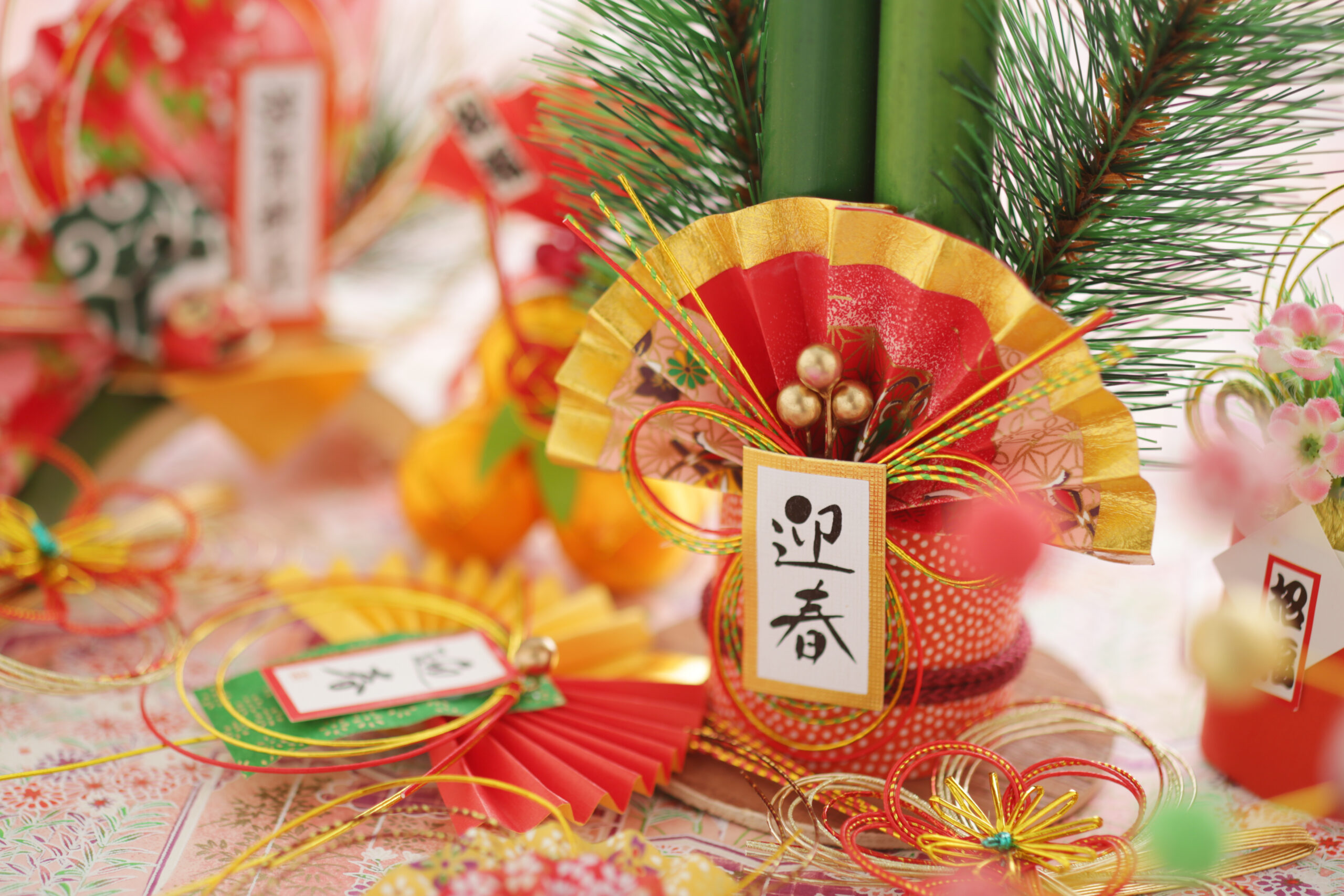
Other Unique Festive Sounds
Beyond the prominent sounds of music and temple bells, various other unique sounds can often be heard at Japanese festivals, depending on the specific event and the local traditions of the region. These might include the sharp clatter of wooden clappers (拍子木, hyōshigi) used to signal the start of events or performances, the specific sounds produced by ritual objects carried in processions, or unique vocalizations and chants associated with particular dances or theatrical performances that are part of the festival celebrations.
The Cultural Significance of Japanese Sounds
Sound as a Reflection of Japanese Aesthetics
Sound in Japan is not merely something to be heard; it is deeply interwoven with the country’s unique aesthetic sensibilities, often emphasizing subtlety, naturalness, and a profound appreciation for quietude.
The Concept of “Ma” (Silence)
The Japanese concept of ma (間), often translated as “space” or “pause,” is fundamental to understanding Japanese aesthetics, including its sound culture. Ma is not simply the absence of sound but rather an active and integral part of the overall experience. It allows the listener to more deeply appreciate the sounds that are present and creates a sense of rhythm and balance. In traditional Japanese music, as well as in everyday life, ma is carefully considered and intentionally used to enhance the overall impact and meaning.
Appreciation of Subtle Sounds
Japanese culture often places a high value on subtle and delicate sounds that might be easily overlooked in other cultures. The gentle sound of a light rain (雨, ame) softly pattering on the eaves (軒, noki) or the outer wooden frames near shōji (障子), the faint chirping of insects (虫の音, mushi no ne), or the quiet rustling of leaves are all appreciated for their ability to evoke a sense of tranquility, connection to nature, and the fleeting beauty of the present moment. This appreciation for the subtle reflects a broader cultural emphasis on mindfulness and keen attention to detail in all aspects of life.
The Role of Sound in Japanese Rituals and Ceremonies
Sound plays a crucial and often symbolic role in many traditional Japanese rituals and ceremonies, serving to mark important moments, create a specific atmosphere conducive to the event, and convey deep cultural and spiritual meaning.
Sounds in Tea Ceremony
The Japanese tea ceremony (茶道, sadō) is a highly ritualized practice where sound plays a subtle yet significant role. The deliberate and quiet handling of the tea bowl (茶碗, chawan), the soft whisking of the matcha (抹茶), and the quiet pouring of hot water from the kettle (鉄瓶, tetsubin) all contribute to the serene and contemplative atmosphere that is central to the ceremony. Even the deliberate absence of loud sounds is carefully maintained to enhance the focus and mindfulness of both the host and the guests.
Sounds in Noh and Kabuki Theater
Traditional Japanese theater forms such as Noh (能) and Kabuki (歌舞伎) utilize sound in highly stylized and symbolic ways to convey emotions, indicate dramatic shifts, and create a specific theatrical atmosphere. In Noh, the haunting and ethereal melodies of the nohkan (能管) flute, the intricate rhythmic patterns of the small hand drum (小鼓, kotsuzumi) and large hand drum (大鼓, ōtsuzumi) – both essential forms of hand drum (鼓, tsuzumi) – along with the powerful beats of the taiko (太鼓) are all integral to the performance’s narrative and emotional impact.
In Kabuki, the dramatic beats of the tsuzumi (鼓) are accompanied by various styles of vocal music that help tell the story and create atmosphere. These vocal and instrumental elements, along with the sharp, percussive sounds of wooden clappers (拍子木, hyōshigi), all contribute to the highly expressive and dynamic nature of the theatrical experience.
Sounds and Japanese Spirituality
Sound has a profound and long-standing connection to spirituality in Japan, particularly within the major religious traditions of Buddhism and Shinto.
The Sound of Prayer and Meditation
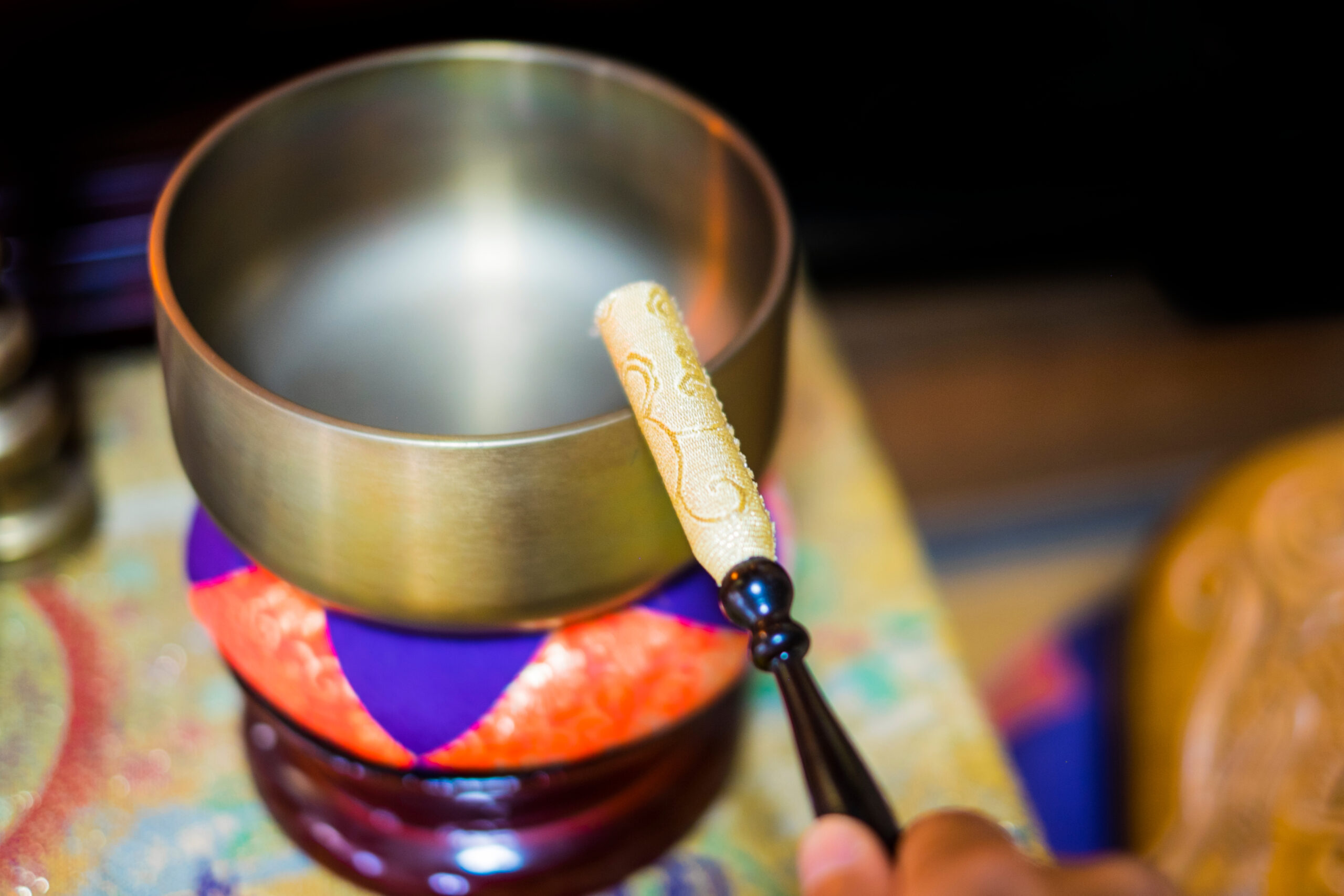
In Buddhism, the chanting of sutras (経, kyō) is a fundamental practice used to focus the mind, cultivate mindfulness, and connect with spiritual teachings. The resonant sound of a singing bowl (おりん, orin) is also frequently used in Buddhist rituals and for personal meditation, believed to promote tranquility and inner peace. In Shinto, the gentle ringing of a small bell (鈴, suzu) at the entrance of a shrine is a common practice to call the attention of the spirits or deities (神, kami) and is often followed by the clapping of hands (柏手, kashiwade) as a form of prayer and reverence.
Sacred Sounds in Shinto Shrines
Shinto shrines (神社, jinja) often feature specific sounds that are considered sacred, auspicious, or indicative of the presence of the divine. Besides the clear ringing of the suzu bell, the natural sounds within the often-sacred groves of trees surrounding a shrine, such as the rustling of leaves in the wind, can be interpreted as the breath of the kami. The sound of water flowing in the purification fountains (手水舎, temizuya) is also significant, symbolizing cleansing and purification before approaching the sacred spaces. The overall atmosphere of quiet reverence within a shrine complex contributes to its spiritual soundscape.
Japanese Etiquette Related to Sound
Japanese culture places a very high value on consideration and harmony within social interactions, and this extends significantly to the way individuals produce and perceive sounds in public and private spaces.
Considerations in Public Spaces
In general, it is considered a fundamental aspect of politeness in Japan to be highly mindful of the volume of one’s voice and to actively avoid making loud or disruptive noises in public environments such as trains, restaurants, and libraries. The use of headphones for personal audio devices is widespread as a way to contain sound, and speaking loudly on mobile phones in designated quiet areas is often strongly discouraged or even prohibited. This pervasive emphasis on quiet consideration contributes significantly to the overall sonic environment of Japanese society.
Experiencing Japanese Sound Culture
Where to Hear Unique Japanese Sounds
To truly appreciate the richness of Japanese sound culture, experiencing it firsthand in various authentic settings is invaluable.
Natural Environments
Japan’s diverse and often breathtaking natural landscapes offer a wealth of unique and often tranquil sounds. Visiting a serene bamboo forest (竹林, chikurin) allows you to immerse yourself in the gentle rustling and swaying of the bamboo stalks in the breeze. Hiking along rivers and near cascading waterfalls (滝, taki) provides the soothing and rhythmic sounds of flowing water, often considered therapeutic. Spending time in traditional Japanese gardens (日本庭園, nihon teien) can expose you to the subtle yet captivating sounds of insects chirping and birds singing, creating a harmonious natural symphony.
Temples and Shrines
Temples (寺, tera) and shrines (神社, jinja) across Japan are rich repositories of traditional and often sacred sounds. Within the tranquil grounds of a temple, you can often hear the deep, resonant tones of temple bells (鐘, kane) as they mark time or call to prayer. In some temples, you might also witness the chanting of sutras (経, kyō) by monks. At Shinto shrines, the gentle ringing of the suzu (鈴) bell as visitors approach to offer prayers is a distinctive sound. The serene and often ancient atmosphere of these sacred spaces naturally enhances the appreciation of these culturally significant sounds.
Traditional Performances
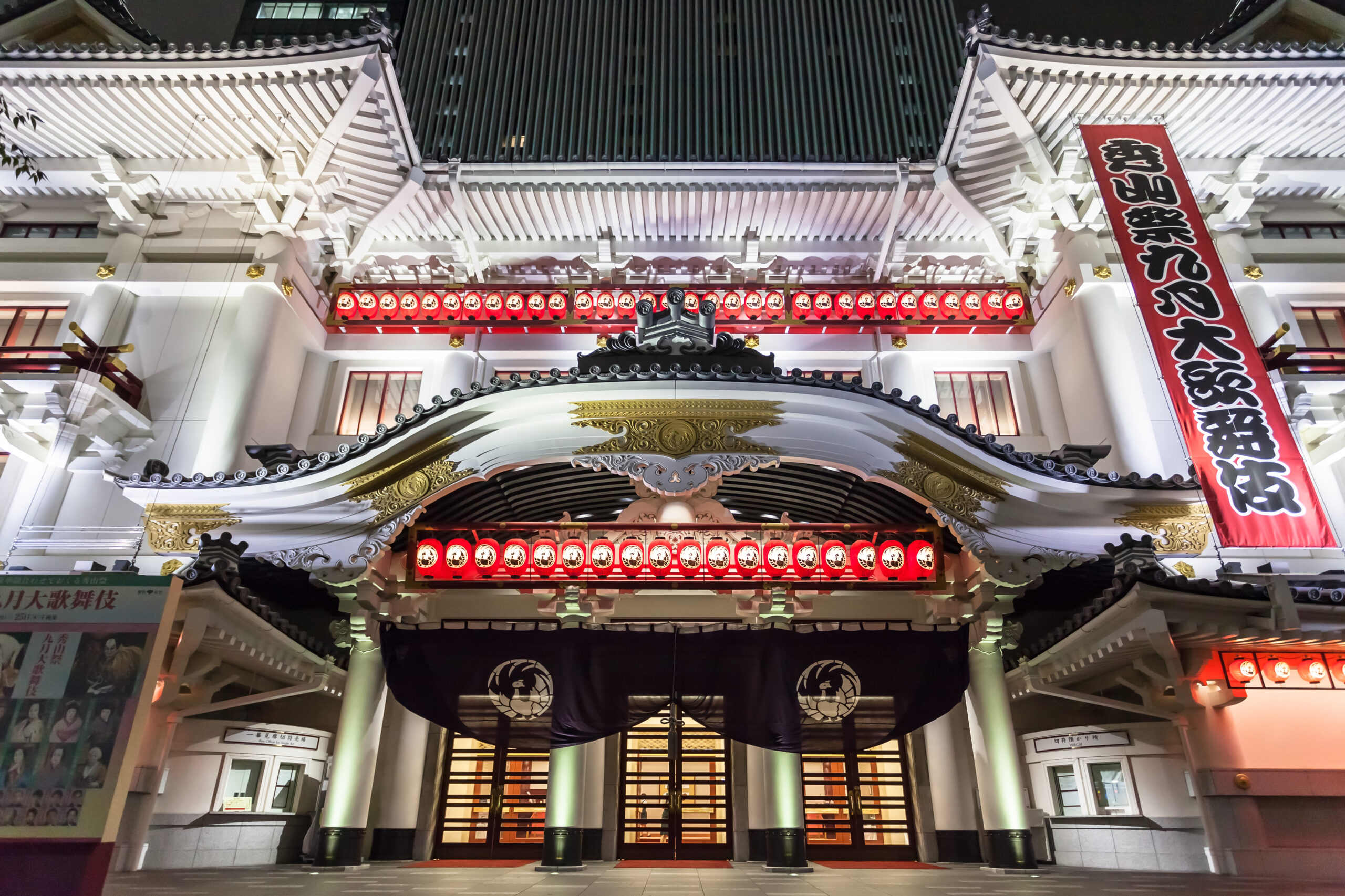
Attending traditional Japanese performing arts offers a direct and immersive way to experience the country’s unique sound culture. Noh (能) and Kabuki (歌舞伎) theater showcase highly stylized vocal techniques and distinctive instrumental music that have been refined over centuries. Bunraku (文楽) puppet theater also features a unique form of narrative chanting (義太夫, gidayū) accompanied by the shamisen (三味線).
Performances of traditional Japanese music often feature solo or ensemble pieces played on instruments like the shakuhachi (尺八), koto (箏), and shamisen. Attending a powerful taiko (太鼓) drumming concert provides an energetic and intuitive auditory experience that is both captivating and deeply rooted in Japanese tradition.
Festivals and Events
Festivals (祭り, matsuri) throughout Japan are vibrant and energetic events that are filled with a diverse array of unique sounds. You can hear the lively and rhythmic music played on taiko drums and flutes (笛, fue), the enthusiastic shouts and calls of participants (掛け声, kakegoe) as they carry portable shrines or perform dances, and the general lively chatter and excitement of the crowd enjoying the festivities. Many local festivals also feature their own unique sonic traditions, such as specific chants, musical instruments, or sound-making rituals that are specific to that region.
How to Appreciate Japanese Sound Culture
To fully appreciate the subtle nuances and deep cultural significance of Japanese sound culture, it is helpful to engage with it actively and with an open and receptive mind.
Mindful Listening
Practicing mindful listening, which involves paying close attention to the sounds around you without judgment, can significantly enhance your appreciation. Whether you are in a bustling city or a quiet natural setting in Japan, try to consciously focus on individual sounds, their qualities, and the way they interact with each other to create the overall soundscape.
Learning About the Cultural Context
Understanding the cultural background, historical significance, and symbolic meaning behind different sounds can profoundly deepen your appreciation. For example, learning about the role of temple bells in Buddhist philosophy or the symbolism of certain musical cues in Noh theater can greatly enrich your experience and understanding of Japanese culture.
Exploring Japanese Music
Actively exploring various genres of Japanese music, both traditional and contemporary, can provide a broader and more comprehensive understanding of the country’s sonic expressions. Take the time to listen to different instruments, vocal styles, and musical traditions to discover what resonates with you and to gain insights into the diverse soundscapes of Japan.
Don’t forget to explore min’yō (民謡), or Japanese folk songs, which vary greatly from region to region, often reflecting the local history, work traditions, and unique character of each area.
- Sōran Bushi (ソーラン節): (Genre: Work Song) From Hokkaido, this energetic song was traditionally sung by herring fishermen. It features powerful vocals and rhythms mimicking their work, with the well-known “Dokkoisho!” (どっこいしょ!) call.
- Aizu Bandaisan (会津磐梯山): (Genre: Festival Song) Originating from the Aizu region of Fukushima, this is a lively and cheerful song often associated with Mount Bandai and local festivals. It has an upbeat melody celebrating the beauty of the area.
- Kagome Kagome (かごめかごめ): (Genre: Traditional Folk/Children’s Song) This well-known song has a somewhat mysterious and haunting melody. Often sung as a children’s game, its origins and deeper meanings have been widely debated.
Conclusion
The Enduring Appeal of Japanese Sound Culture
Japanese sound culture, with its remarkable diversity ranging from the profound tranquility of nature to the vibrant energy of festivals, holds a unique and enduring appeal for people around the world. It reflects a deep-seated appreciation for both the presence and absence of sound, offering a rich and nuanced tapestry of auditory experiences that are deeply intertwined with Japanese traditions, aesthetic principles, and spiritual beliefs. This unique sonic landscape provides a valuable insight into the heart and soul of Japan.
Embracing the Auditory Beauty of Japan
Whether it is the gentle whisper of wind through a bamboo grove, the powerful and resonating beat of taiko drums, or the subtle and deliberate sounds within a traditional tea ceremony, the sounds of Japan offer a way to experience its diverse culture, from the peacefulness found in nature and traditional arts to the vibrant energy of its festivals. By actively engaging in mindful listening and seeking to understand the cultural context behind these sounds, one can gain a deeper and more profound appreciation for the beauty and depth of Japanese culture as a whole. We encourage you to embark on your own journey of auditory discovery and explore the many unique and fascinating sounds that Japan has to offer.
Q&A about Japanese Sound Culture
What is considered unique about Japanese sound culture?
Japanese sound culture is considered unique for several reasons. One key aspect is the profound appreciation for both sound and silence, embodied in the concept of ma (間). Furthermore, there is a deep reverence for natural sounds, which are often integrated into art and daily life. The deliberate and often subtle nature of sonic expressions in traditional arts and rituals also sets it apart. The emphasis on listening attentively to the environment and the value placed on quietude in many social settings are other distinguishing features.
Where can I best experience traditional Japanese music?
You can best experience traditional Japanese music by attending live performances of traditional theater such as Noh (能), Kabuki (歌舞伎), and Bunraku (文楽). Dedicated concerts featuring instruments like the shakuhachi (尺八), koto (箏), and shamisen (三味線) are also excellent opportunities. Additionally, some temples and shrines may feature traditional music during specific ceremonies or festivals.
Are there any specific etiquette rules regarding sound in Japan?
Yes, Japanese etiquette places a strong emphasis on being considerate of others regarding sound. In general, it is expected to keep your voice at a moderate level and to avoid making loud or disruptive noises in public spaces such as trains, restaurants, and libraries. Using headphones for personal audio is common, and speaking on mobile phones in designated quiet areas is often discouraged.
What are some examples of tranquil Japanese ambient sounds?
Examples of tranquil Japanese ambient sounds include the gentle rustling of bamboo (竹, take) leaves in the wind, the soothing murmur of flowing water in streams and waterfalls, the delicate singing of birds, the soft patter of rain, the subtle sounds within a Zen garden, and the gentle ringing of wind chimes (風鈴, fūrin).
How does sound play a role in Japanese festivals?
Sound is absolutely integral to the vibrant and energetic atmosphere of Japanese festivals (祭り, matsuri). The powerful and rhythmic beating of taiko (太鼓) drums, the lively melodies played on flutes (笛, fue) and other instruments, and the enthusiastic shouts and calls (掛け声, kakegoe) of participants all contribute to the festive mood. The resonant sounds of temple bells (鐘, kane) may also mark important moments or add a spiritual dimension to the celebrations.
